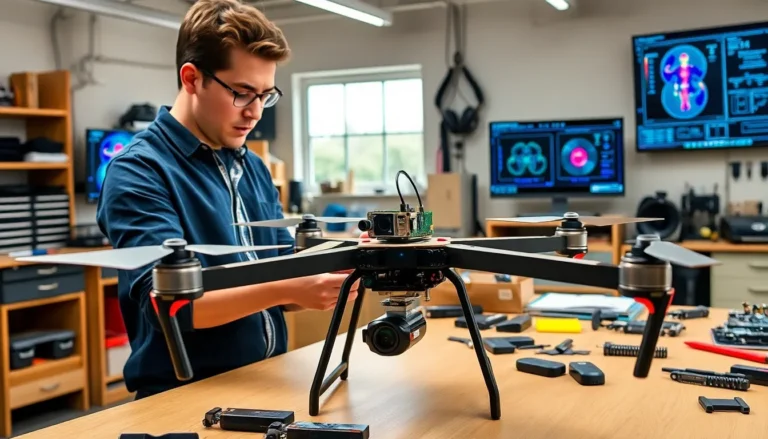Table of Contents
ToggleIn recent years, the world of sports has witnessed unprecedented changes, largely influenced by advancements in technology and shifts in media consumption. The intersection between sports, technology, and fan engagement has not only reshaped how games are followed, but it has also democratized the narratives surrounding them. This article delves into the latest trends in sports media coverage, the significance of user-generated content, and innovative methods enhancing fan engagement while looking forward to what the future holds for the sports landscape.
The Evolution Of Sports Media Coverage

The sports media landscape has evolved significantly over the past few decades. Traditionally dominated by television broadcasts and print media, coverage has expanded to include a plethora of digital platforms catering to a diverse audience. This evolution has unlocked new ways for fans to consume content, leading to an almost real-time dissemination of information.
Impact Of Social Media On Sports Reporting
Social media has revolutionized the way sports reporting is done. Platforms such as Twitter, Instagram, and TikTok help immediate sharing of news and highlights. These channels allow fans to engage with athletes and teams directly, fostering a sense of community. Rather than solely relying on journalists for updates and insights, fans now create content that can go viral, influencing discussions and even sporting outcomes.
Emerging Platforms And Technologies
With the rise of streaming services and podcasts, traditional media is being complemented, and sometimes overshadowed, by these new forms of sports coverage. Services like DAZN and ESPN+ have made it possible for fans to watch games live on various devices, while podcasts provide in-depth discussions that appeal to niche audiences. Also, technologies like augmented reality (AR) and virtual reality (VR) are set to redefine how fans experience games, making coverage more immersive than ever.
The Role Of User-Generated Content
User-generated content (UGC) is emerging as a significant factor in shaping sports narratives. Fans increasingly contribute to the content ecosystem, creating videos, blogs, and social media posts that provide alternative perspectives on games, players, and issues within the sport.
Diversity In Sports Narratives
The democratization of content creation has led to a richer tapestry of sports narratives. Voices that were once marginalized are now showcased, offering more diverse perspectives on various issues, including social justice, mental health in athletics, and inclusivity in sports. This shift not only broadens the understanding of sports culture but also encourages younger audiences to engage more deeply with the issues that resonate with them.
Changing Fan Engagement Methods
Fan engagement has undergone a transformation, driven by advancements in technology and the evolving preferences of audiences. The way fans consume and participate in sports has changed dramatically, leading organizations to innovate continuously.
The Influence Of Data Analytics In Sports
Data analytics is at the forefront of this evolution, providing teams and organizations with insights into fan behavior and preferences. By analyzing data, sports organizations can tailor experiences that cater to the unique desires of their fan base. Whether it’s through personalized marketing campaigns or dynamic viewing experiences, the data allows for a more engaged and loyal fan base.
Fan Accessibility And Experience Enhancement
Ensuring fan accessibility and improving the overall experience of following sports are critical for organizations aiming to captivate today’s audiences. With an overwhelming array of choices in how to follow sports, providing value and accessibility is paramount.
Integrating Esports And Traditional Sports
The integration of esports alongside traditional sports is a significant trend that enhances accessibility for younger generations. Platforms that offer both traditional sporting events and esports competitions create a holistic experience for fans. This convergence not only broadens the audience but also bridges the gap between different types of sports fans, fostering a more inclusive environment.
The Future Of Sports Intersectionality
Looking ahead, the intersectionality of sports media, fan engagement, and technology promises to deepen and evolve in unexpected ways. As technology continues to advance, sports organizations are likely to explore new avenues to reach fans. Innovations in AR and AI could lead to entirely new ways to interact with sporting events, making the experience even more engaging.
Besides, the increasing importance of social issues will likely shape the future of sports narratives. Organizations that prioritize diversity and inclusion will not only resonate with modern audiences but also establish deeper connections with their fan bases.
Conclusion
The intersection of sports, media, and technology is a dynamic landscape that continues to evolve. By embracing the changes in how sports are covered and consumed, organizations can foster greater fan engagement and inclusivity. As we move into a future replete with possibilities, the synergy between technology and fan experience will remain pivotal in shaping the realm of sports.







